Advertisements
Advertisements
प्रश्न
Study the diagram given alongside and answer the questions that follow:
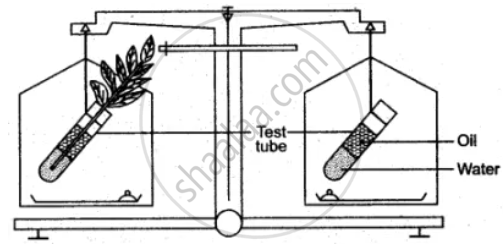
(i) Explain the physiological process of being study.
(ii) What will be the observations in the two test-tubes after about 2-3 days?
(iii) Give a reason for your answer in (ii) above.
(iv) Why is the surface of water covered with oil?
(v) State the purpose of setting up test tube B.
उत्तर
(i) Transpiration: Loss of water as water vapour from aerial parts of the plant.
(ii) After 2-3 days the level of waterfalls in test-tube A while it remains constant in test tube B.
(iii) The fall in the level of water in test-tube A due to the absorption of water by the roots.
(iv) The oil has been put in each test-tube to prevent the loss of water by evaporation.
(v) The purpose of setting up test-tube B is to show that in the absence of a plant, there is no change in the level of water.
APPEARS IN
संबंधित प्रश्न
Transpiration helps in creating ______ force and in eliminating excess ______.
Distinguish between the following:
Transpiration and evaporation
The diagram alongside represents a structure found in a leaf. Study the same and answer the questions that follow:
(i) Name the parts labeled A and B.
(ii) What is the biological term for the above structure?
(iii) What is the function of the part labeled A?
(iv) Mention two structural features of A, which help in the function mentioned in (iii) above?
(v) Where is this structure likely to be found in a leaf?
(vi) The structure (fig.5.22) helps in the process of transpiration. Explain the term transpiration.
(vii) How many other cells are found surrounding this structure as seen in the diagram?
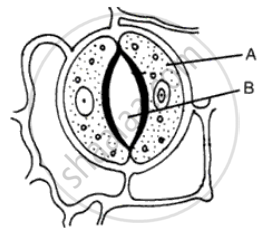
Choose the correct answer:
The cause of wilting is more ___________
The figure given below represents an experimental setup with a weighing machine to demonstrate a particular process in plants. The experimental setup was placed in bright sunlight. Study the diagram and answer the following questions.
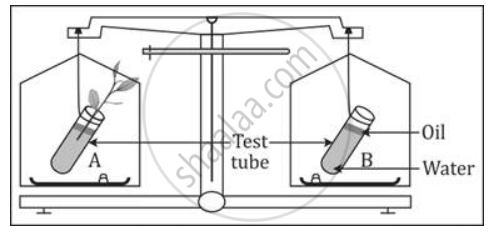
When the weight of the test tubes A and B is taken before and after the experiment, what change is observed? Justify.
Explain the Term
Transpiration
Study the diagram given below and answer the questions that follow:
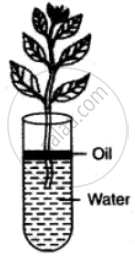
(i) Name the process being studied in the above experiment.
(ii) Explain the process mentioned in (i) above.
(iii) Why is oil placed over water?
An outline sketch of a tree is shown in a diagram below. Study the same and answer the questions that follow:
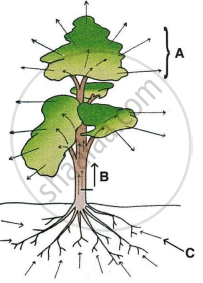
- Name and define the phenomenon labelled A in the diagram.
- Write the significance of the process mentioned in A for the plants.
- What do the direction of the arrows in B and C indicate? Name the phenomena.
- Draw a neat and labelled diagram of an opened stomata.
